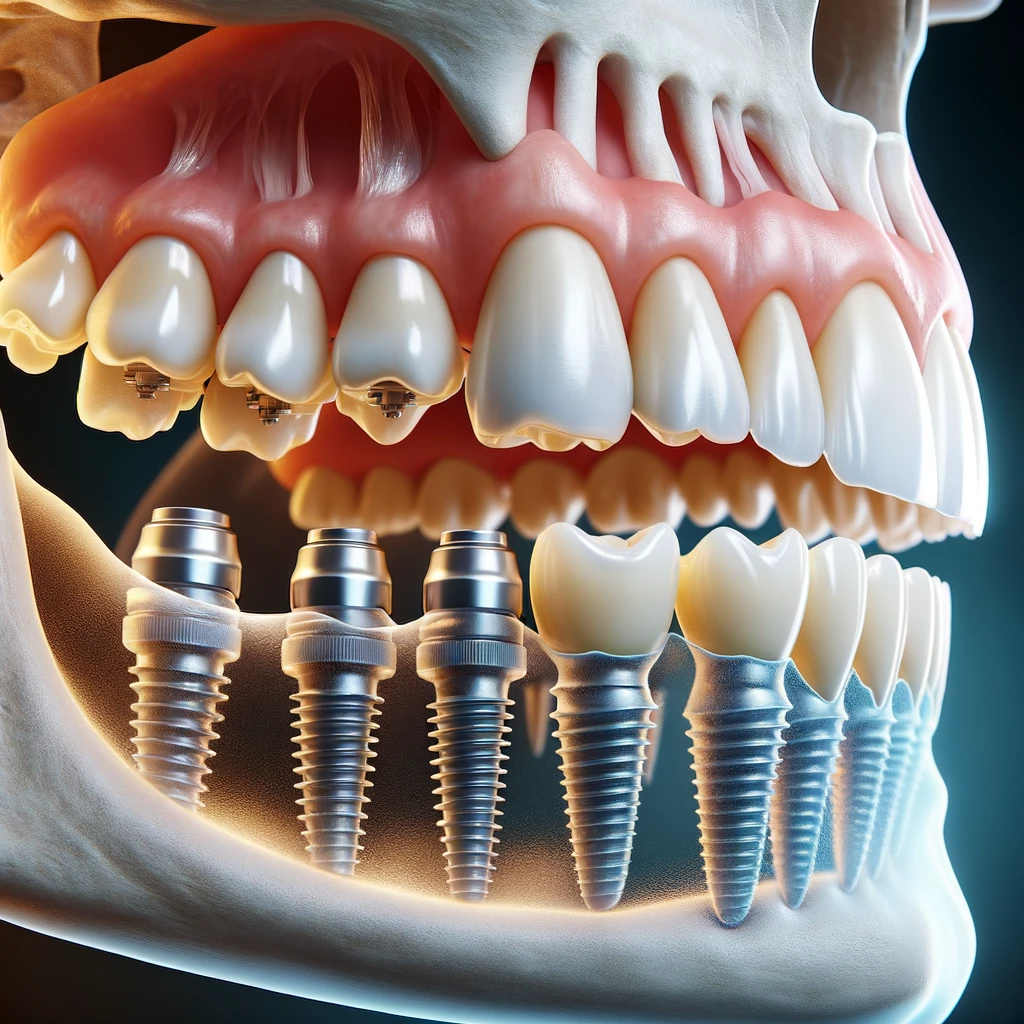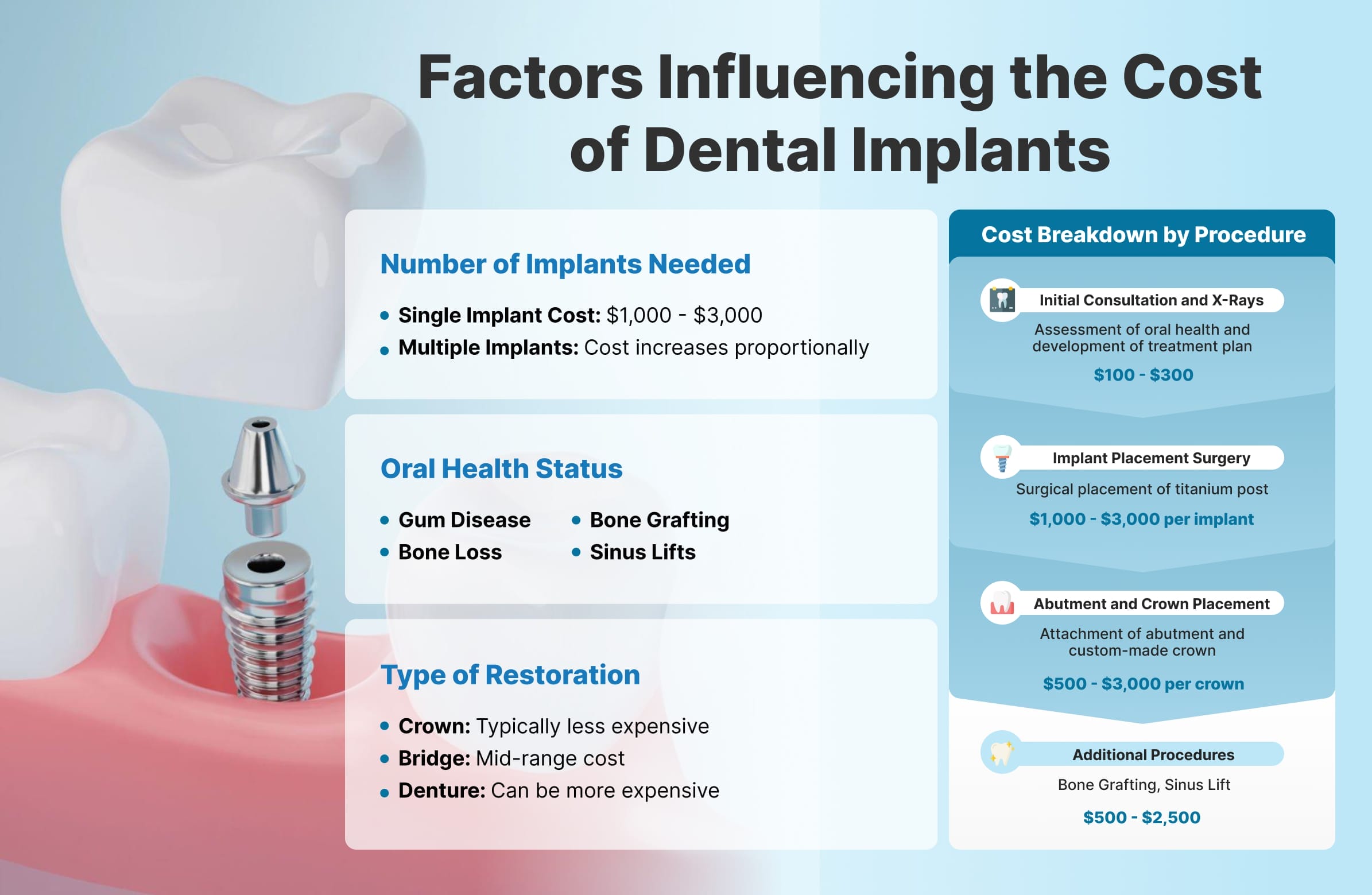All About Dental Sense
All About Dental Sense
Blog Article
8 Easy Facts About Dental Sense Explained
Table of ContentsDental Sense - The FactsDental Sense Can Be Fun For EveryoneThe 2-Minute Rule for Dental SenseThe Main Principles Of Dental Sense
are medical gadgets operatively implanted right into the jaw to restore a person's capability to chew or their look. They give support for synthetic (fake) teeth, such as crowns, bridges, or dentures. When a tooth is lost as a result of injury or illness, an individual can experience problems such as quick bone loss, defective speech, or adjustments to eating patterns that lead to pain.Dental implant systems include an oral implant body and dental implant joint and might likewise consist of an abutment fixation screw. Dental implant vs bridge. The oral implant body is surgically put in the jawbone instead of the tooth's root. The dental implant joint is normally attached to the dental implant body by the joint addiction screw and expands through gums right into the mouth to support the attached synthetic teeth
(https://ameblo.jp/dentalsense1/entry-12882048969.html)Structure of The Dental Implant System picking oral implants, speak to your oral service provider concerning the potential advantages and dangers, and whether you are a prospect for the treatment. Things to take into consideration: Your total health and wellness is an essential consider determining whether you are a good prospect for dental implants, how much time it will certainly take to recover, and for how long the implant might remain in area.
Smoking cigarettes may impact the healing process and reduce the long-term success of the implant. The healing procedure for the dental implant body might take several months or longer, throughout which time you typically have a short-term joint in area of the tooth. the oral implant procedure: Very carefully comply with the dental health instructions offered to you by your dental supplier.
Getting The Dental Sense To Work
Implant failure can result in the requirement for one more surgical procedure to fix or change the dental implant system. Brings back the ability to eat Recovers cosmetic look Helps maintain the jawbone from diminishing due to bone loss Preserves the health of the surrounding bone and periodontals Assists maintain adjacent (close-by) teeth secure Enhances lifestyle Damage to bordering natural teeth during implant placement Injury to the surrounding cells throughout surgery, such as sinus opening Injury throughout surgery (for instance, fracture of bordering jawbone) Poor feature, such as really feeling like the teeth do not attack together typically A sensation that the tooth hangs or turning in location arising from a joint screw loosening up Implant body failure (looseness of the implant body) due to systemic infection, which might be more probable in people with unchecked diabetes mellitus because of regional infection in bone and gums sustaining the dental implant body as a result of delayed recovery, which may be most likely in patients who smoke Problem cleaning up the periodontals around the dental implant, causing poor dental hygiene Neglected gum condition Post-surgical pins and needles because of nerve impingement or damages Constantly inform healthcare providers and imaging technicians that you have dental implants before any magnetic resonance imaging (MRI) or x-ray treatments.
FDA is not conscious of any type of adverse events reported for MRI or x-ray treatments with oral implants. Oral implants systems are usually made of materials that comply with worldwide consensus requirements of the International Company for Standardization (ISO) or ASTM International. These requirements have information of what makes a risk-free product.

A dental implant is a framework that replaces a missing tooth. With screw-like gadgets, the doctor inserts a dental implant right into the jawbone, and it serves as a support for an artificial tooth, called a crown. A gadget called an abutment connects the fabricated tooth to the oral implant. The crown is custom-made to fit the individual's mouth and match the shade of their teeth.
The Basic Principles Of Dental Sense
Some individuals are not qualified for oral implant surgical treatment. It is for dental specialists to operate individuals with: acute illnessuncontrollable metabolic diseasebone or soft cells condition or infectionIf these concerns are solved, an individual can have the surgical procedure. In, dental specialists abstain from operating on people with: If people with any one of the above undertake dental implant surgical treatment, there is a higher risk of the dental implant stopping working.

Dental dental implant surgery is an individualized procedure. Provide you time to heal. Affix the message and last crown, bridge or denture.
Next off, your surgeon will very carefully place the oral implant right into your jaw. Your doctor will rearrange your periodontals and close the incision with stitches. If your implant is near the front of your mouth, your dentist will certainly make a short-term tooth for you to use until you heal. This way, you won't have a gap in your smile while you recoup.
Our Dental Sense Statements
Your company can tell you what to expect in your circumstance. Throughout the healing stage, your jawbone should fuse to the oral implant. This procedure, called osseointegration, is essential for security and long-lasting success. This procedure can take anywhere from three to nine months. In many cases, it may take longer.
As soon as your implant heals, your dental professional can affix the joint (tiny connector blog post) and your final reconstruction (crown, bridge or denture). This usually takes click here for more about one hour to finish and may require a 2nd minor surgery. You shouldn't really feel any discomfort throughout your dental implant treatment because your copyright will certainly use medicine to numb your gum tissues.
Report this page